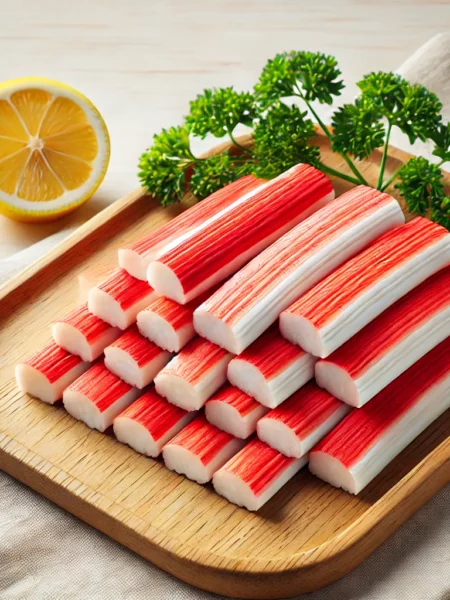
Shredded Cheese: The Ultimate Ingredient for Perfectly Melted Dishes
Description
shredded cheese

Shredded cheese is a versatile, convenient, and delicious ingredient found in nearly every kitchen. Whether you're sprinkling it over a casserole, melting it on a pizza, or adding it to a salad, shredded cheese can elevate almost any dish. This guide will explore the different types of shredded cheese, its uses, the benefits of shredding your own cheese, and how to store it for optimal freshness.
Types of Shredded Cheese
There are a wide variety of shredded cheese types available, each bringing unique flavors and textures to your dishes. Some of the most popular include:
- Cheddar: A sharp and slightly tangy cheese that melts well, commonly used in dishes like mac and cheese, burgers, and casseroles.
- Mozzarella: Known for its stretchiness and mild flavor, it's a top choice for pizzas, lasagnas, and Italian dishes.
- Parmesan: A hard, aged cheese with a salty and nutty flavor, typically used as a topping for pasta dishes, salads, and soups.
- Monterey Jack: A semi-soft cheese that melts smoothly, making it ideal for quesadillas, nachos, and sandwiches.
- Colby Jack: A blend of Colby and Monterey Jack, offering a mild, creamy flavor. It’s perfect for melting over baked dishes or incorporating into a cheese platter.
- Pepper Jack: A spicier version of Monterey Jack, with added peppers for a kick. Great for spicing up tacos, fajitas, or grilled cheese sandwiches.
Benefits of Pre-Shredded Cheese
While shredding your own cheese has its perks, pre-shredded cheese offers unmatched convenience. Here are a few advantages:
- Convenience: Pre-shredded cheese saves time in meal preparation, allowing for quick access when cooking.
- Even Distribution: The uniform size of the shreds ensures even melting and distribution across your dish.
- Longer Shelf Life: Commercial shredded cheese often contains anti-caking agents like potato starch to prevent clumping, helping extend shelf life.
The Drawbacks of Pre-Shredded Cheese
Despite its convenience, pre-shredded cheese has some downsides that might make shredding your own a better option:
- Additives: Pre-shredded cheese often contains preservatives and anti-caking agents like cellulose or potato starch, which can affect both the flavor and melting quality.
- Inferior Melting: The anti-caking agents used to prevent clumping can cause the cheese to melt unevenly or become greasy.
- Cost: Pre-shredded cheese is generally more expensive than buying a block of cheese and shredding it yourself.
Why Shred Your Own Cheese?
If you’re looking for the best flavor and texture, shredding your own cheese is the way to go. Here are the benefits:
- Fresher Flavor: Cheese that you shred yourself lacks preservatives, so it has a fresher, richer taste.
- Better Melting: Without added starches or anti-caking agents, freshly shredded cheese melts more smoothly and consistently.
- Cost-Effective: Buying cheese in block form is usually cheaper per ounce than pre-shredded options.
- Versatility: You can shred or grate the cheese to your preferred size, depending on the recipe's needs.
How to Shred Cheese at Home
Shredding cheese at home is easy and requires minimal tools. Here are a few methods:
- Box Grater: This is the most common method. Simply rub the cheese against the large-hole side of the box grater for evenly shredded cheese.
- Food Processor: For larger quantities, a food processor equipped with a shredding blade can quickly and efficiently shred cheese.
- Mandoline with Grater Attachment: If you want precision and uniformity, a mandoline with a grater attachment is a good choice.
- Handheld Grater: For small amounts of cheese, a handheld grater can be convenient and quick.
Best Cheeses to Shred at Home
While many cheeses can be shredded at home, some are particularly well-suited for this process:
- Cheddar: Easy to shred and versatile.
- Mozzarella: While soft, it can be shredded, especially after being chilled.
- Swiss: Great for melting and adding a unique flavor to sandwiches or baked dishes.
- Provolone: Mild in flavor, it works well in Italian dishes like pasta and pizza.
- Gouda: Its slightly sweet and creamy texture makes it perfect for shredding.
How to Store Shredded Cheese
Storing shredded cheese properly can make it last longer and preserve its flavor:
- In the Fridge: After shredding, store cheese in an airtight container or resealable plastic bag. Label it with the date, and use it within a week for the best flavor.
- In the Freezer: Shredded-cheese freezes well for up to 3 months. Spread the cheese out on a baking sheet in a single layer and freeze it. Once frozen, transfer to a freezer-safe bag or container.
Using Shredded Cheese in Cooking
Shredded-cheese is incredibly versatile in the kitchen and can be used in countless dishes. Here are a few popular uses:
- Melting: Cheddar and mozzarella are perfect for melting over dishes like pizza, nachos, and casseroles.
- Topping: Parmesan, sharp cheddar, and Monterey Jack can be sprinkled over salads, tacos, and pasta.
- Filling: Shredded-cheese works well inside quesadillas, enchiladas, and stuffed chicken breasts.
- Baking: Add shredded-cheese to biscuits, bread, and muffins for a cheesy twist.
Common Questions About Shredded Cheese
- Can shredded cheese be frozen?
Yes, shredded-cheese can be frozen for up to three months without affecting its flavor or texture. It’s best to freeze in small portions so you can use just what you need. - Why doesn’t pre-shredded cheese melt smoothly?
Pre-shredded-cheese contains anti-caking agents like cellulose, which can prevent smooth melting. Shredding your own cheese is the best way to achieve a silky melt. - What types of cheese should not be shredded?
Soft cheeses like brie or cream cheese are not ideal for shredding due to their texture. They’re better suited for spreading or melting as-is.
Conclusion
Shredded cheese is a staple in countless dishes, from pizza to pasta to salads. Whether you choose pre-shredded-cheese for convenience or prefer to shred your own for superior taste and melting quality, it's an indispensable ingredient in many recipes. By understanding the different types, best practices for shredding, and how to store it properly, you can elevate your dishes to cheesy perfection.
Note
Handpicked Recipes















